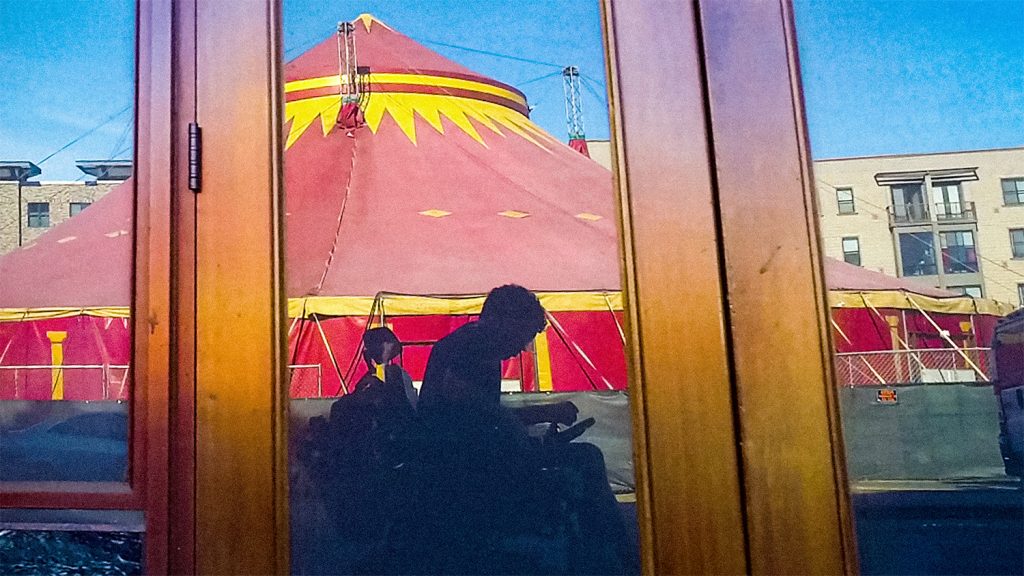First Time Ever That This Writer Reviewed A Movie With Sooo Many Scenes That Had Him Gasping
VOD Release February 20. Winner of 2023 Spirit Award Truer Than Fiction Award; premiered at major festivals in 2022 such as Sundance where it won the Director Award for U.S Documentary, Grand Jury Award in the Full Frame Documentary Festival 2022 and the SFFILM Festival 2022 where it won Feature Documentary Award.
Synopsis
Edited for Style
Veteran Filmmaker Reid Davenport, a visibly disabled person, sets out to make a film about how he sees the world as he travels in an electric wheelchair or on foot without having to be seen himself. The unexpected arrival of a circus tent outside his apartment in Oakland, CA, causes him to take aim at the history and legacy of P.T. Barnum’s Freak Show and its lingering presence in his daily life in causes him, as well as other visibly disabled persons to be subjected to gawking, a lack of accesses to public places and to endure other forms of ableism (which is discrimination in favor of able-bodied folks).
Davenport captures indelible images often abstracted into shapes and patterns separated from their meaning because of the way he is Informed by his position in space, that is, his being lower to the ground. But the circus tent looms in the background and its presenceis reverberated by tangible on-screen interruptions: From what can be annoying unsolicited offers of help from strangers to careless blocking of ramps and other supposed to be accessible passways that he needs clear to be able travel in his wheel chair.
I DIDN’T SEE YOU THERE can compel audiences to confront the spectacle and invisibility of disability discrimination.

Reid Davenport on his wheelchair. Picture Courtesy MPRM Communications
Reid Davenport Director’s Statement (Edited for Style)
There is a curiosity about disability that is sometimes as brazen as that of spectators of a circus freak show. And so often, I bear the brunt of it. As a visibly disabled person, there is what feels like a determination from strangers that I am irreparably different.
The sidewalk at times turns into a stage, and I can’t control it. On that stage, I am looked at without being seen.
I see film after film exploring disability in clichéd, misguided ways. Rarely am I able to relate to stories about disability on screen. I wanted to be able to portray my perspective in a way that would be difficult to fetishize or romanticize. So instead of turning the camera on myself, I turned it outward.
Doing so allowed me to capture the devastation of a stranger’s gaze, the emptiness of being ignored, the physical weight of doors, and the beauty I am privy to as a wheelchair-user and person with spasticity. In many ways, this film is an invitation to see through my eyes, a formal strategy successfully used in Chantal Ackerman’s NEWS FROM HOME, Kristen Johnson’s CAMPERAPERSON, and RaMell Ross’s HALE COUNTY THIS MORNING.
All of the footage in I DIDN’T SEE YOU THERE is shot by me from my literal point-of-view. The motivation for this is twofold: 1, to jar viewers with shots from a camera held by my spastic body or mounted to my wheelchair, and, 2, to unequivocally rebuke the norm of disabled people being seen and not heard. In this film, viewers listen to my voiceover without ever seeing the entirety of my face.
The footage is unconventional, but not meant to be read as “the best I can do” as special. Instead, it should be read as aesthetically pleasing in its own right. The legendary disability scholar Paul K. Longmore wrote about how disability is generative and how impairment produces talent, skills, and opportunities that otherwise would not be realized.
I literally see the world differently than most people, whether it’s my lower situated angle from my wheelchair, my subconscious cautionary heightened perception of the ground I walk on, or the comparatively weakening muscles in my left eye.
In this vein, the transitions between different shots will be driven primarily by aesthetic congruences in composition and shape rather than narrative considerations. The right time to make I DIDN’T SEE YOU THERE was 50 years ago, was 10 years ago, is perhaps going to be 20 years in the future. But if this film makes my so-called unique perspective a little more common, a little more nuanced, a little more boring even, then I will have chipped away at the corrosive legacy of the Freak Show*, a legacy that still resonates within all of us.
{*As in P.T. Barnum and Bailey Freak Show}
Picture Courtesy MPRM Communications
End Part 1. Click here for Part 2

Editor, Publisher Gregg W. Morris @ gregghc@comcast.net, profgreggwmorris@gmail.com
